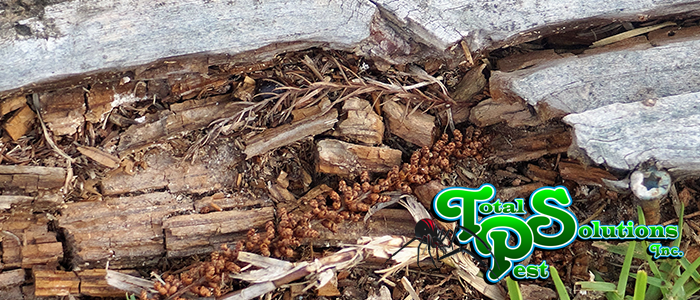
Ah, cicadas – they’re practically the soundtrack of the summer. You hear them every year, and yet recently, it seems they’re all over the news. What’s so special about what’s going on? It seems like they’re always there, but the cicadas that are emerging along the east coast of America are sort of special. Before we can get into unraveling the mystery behind Brood X, maybe we should go over a refresher about these robust, sonorous little creatures. Maybe, like some people who’ve yet to encounter the roar of millions of cicadas, you’ve never paid them any mind. This week, we hope you’ll have a newfound appreciation – or at least understanding – of our seasonal neighbors.
Cicada 101
A cicada is an insect in the family Cicadidae in the order Homoptera, which contains several groups of sound-producing insects. When you found them, they’ll have stout little bodies that can get up to two inches long and two pairs of great big shield-like wings. The front of the face is pretty hard to mistake, too, with what looks like a radiator grill set between two large compound eyes set pretty far apart. Compared to other insects, they usually aren’t very fast on their feet, though they are accomplished fliers. Not only that, they’re completely harmless. On the underbelly of the cicada is a little straw called a rostrum, which they poke into tree bark to drink the sap. Only young and sick trees are at risk of any damage by cicadas. Most established trees can weather them just fine.
Underground Living
But what might surprise you even more is that these insects spend most of their lives underground. The larval, or baby, cicada will dig its way through the soil, nestling up to tree roots and enjoying a meal before continuing on to dig another tunnel somewhere else to find more tree roots. They can do this for two to seventeen years, and when it’s time for them to crawl up, they climb the nearest tree, hold on for dear life, and crawl out of their old shells with brand new wings.
The males use ridges near the base of these wings to produce their trademark mating calls, trying to attract females from as far away as possible. They’ll be out in this form for maybe a couple of weeks before the females lay their eggs in tree bark and the males expire. Then, after around eight weeks, the babies emerge from their eggs and immediately plummet to the earth and start digging holes.
Brood X and Period Cicadas
This year, the famous cicadas making news waves is a group of cicadas known as Brood X, a group of periodical cicadas made up of three species, Magicicada septendecim Magicicada cassinii, and Magicicada septendecula, which all inhabit different trees and have their own calls. What’s so unique about Brood X is that it is absolutely massive, being the most population-dense brood of period cicadas. When they say trillions, they mean trillions of insects flying through the skies, making a deafening buzz that some people compare to electrical wire and others mistake for home alarms. Luckily, such a cacophony only appears once every seventeen years, and the next time we encounter Brood X will likely be in 2038.
Brood X, like all cicadas, will hang around for a couple of weeks while they lay their eggs. If you’ve ever had a problem with the gentle, mournful buzzing of a cicada out your window, just remember that somewhere else right about now, the problem could be much, much worse.
continue reading
Related Posts
Holiday Pest-Free Homes in Winter Haven: Avoiding Cargo Pests As
Auburndale’s Mole Cricket Damage: Repairing Turf Before Frost As the
Lakeland’s Fall Termite Swarms: Early Detection Tips As the summer






